Nina’s Blog: Italian Spring with Art-Part 1
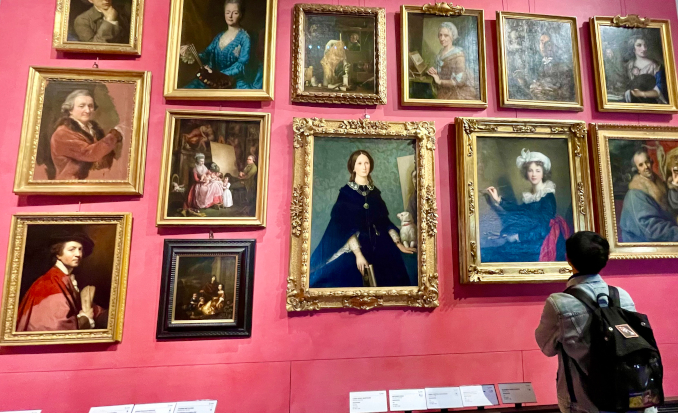
Florence’s Uffizi Galleries—which contain the most famous Renaissance art on the planet—are, unfortunately, best avoided this spring. The size of the crowds is staggering, including huge field-trip groups of high-schoolers and tour groups with guides who block the view of every painting in sight. Right now, those elegant Uffizi halls could be the set for a dystopian movie about escaping on the last ship from Earth.
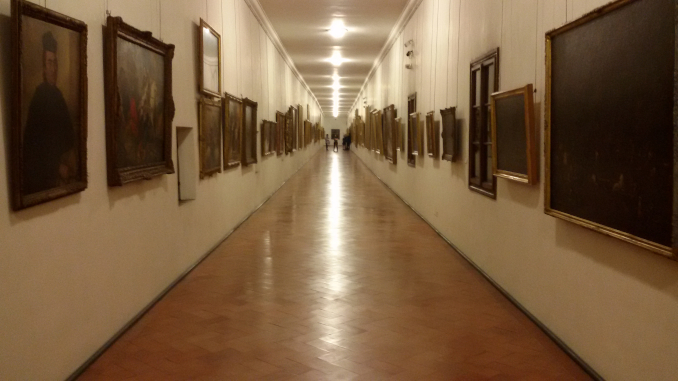
I escaped the throngs by entering a wonderful mezzanine wing devoted to self-portraits by artists from several centuries. Many of the 1,600 portraits in the collection were previously displayed in the Vasari Corridor, a famed passage connecting the Palazzo Vecchio, the Uffizi, and the Pitti Palace; the Medici family and court used the corridor to avoid walking through the crowded and sometimes dangerous streets of Renaissance Florence. More than 400 years later, the city’s streets are still teeming with people, but the corridor has been closed since 2016 for renovations. It is not yet open to the public, despite several announced reopening dates. For the moment, a gallery wing displays a selection of this famed self-portrait collection.
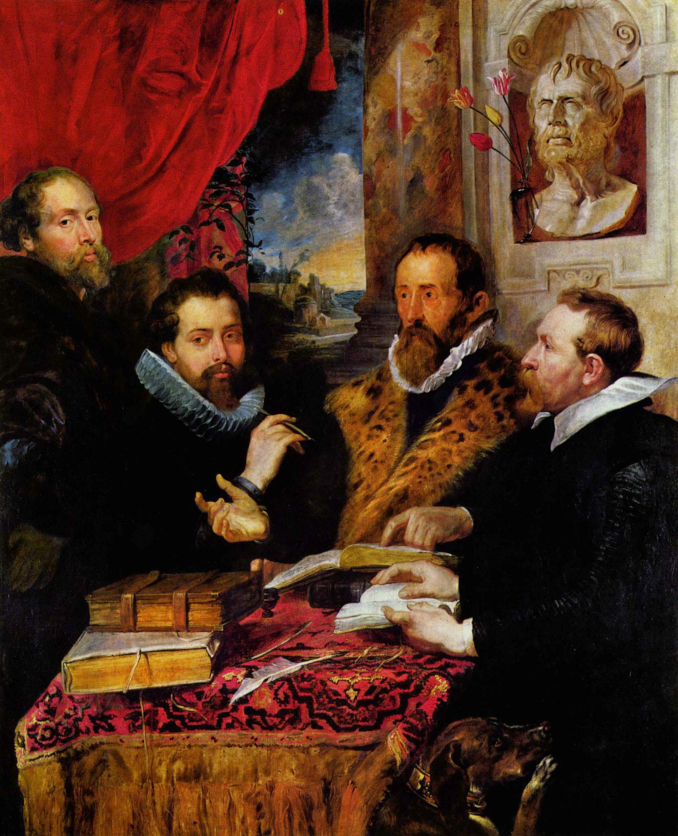
Some of these pictures are world-famous, like Rubens’ self-portrait with his brother and two friends, or Angelika Kauffmann’s romantic Self-Portrait as a Muse of Painting.
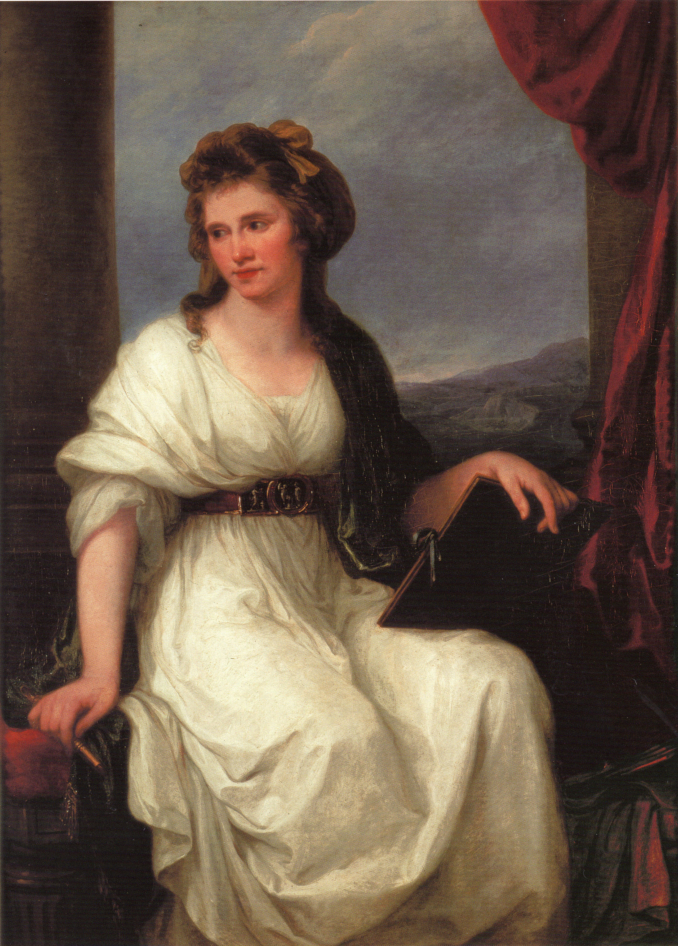
There are quite a lot of portraits of women artists in the gallery, including some iconic ones by Sofonisba Anguissola, Lavinia Fontana, Elisabeth Vigée Le Brun, and Rosalba Carriera (all these portraits will be featured in my upcoming book, Women in Art). Some pictures are really whimsical, like that by Jean-Étienne Liotard donning an exotic costume (after a trip to the Middle East, he adopted Turkish attire).

While the majority of self-portraits tend to be serious images of male artists holding the requisite artist props such as a brush or palette, there is an occasional image that is less serious, like the one by an Italian artist and fresco restorer named Raimondo Zaballi, who chose to show himself in the middle of painting a portrait of … a cat.

The most fascinating self-portraits are those donated by contemporary artists, such as Ai Weiwei’s Warhol-style self-portrait made of Lego bricks, or Cai Guo-Qiang’s portrait made using his trademark gunpowder explosion, or Yayoi Kusama’s self-portrait in her inimitable style of colorful dots.
Still in escape mode from the throngs of Uffizi visitors, I wandered into the Palazzo Medici Riccardi, which is the location of the most charming treasure of Florence—the Medici Chapel covered in frescoes of Benozzo Gozzoli. The museum is hosting a temporary exhibition, “Enchantment of Orpheus” (March 20-Sept. 8, 2024), which is themed around the myth of Orpheus and Eurydice. There, you can find some exquisite artworks brought over from museums all over Europe.

From the Louvre, there is a beautiful drawing, attributed to Rembrandt but recently claimed to be just “in the style of Rembrandt” and drawn by his pupil, Govert Flinck. Because Flinck has a bit of a plodding style, I prefer to believe that this little drawing is actually by his master.
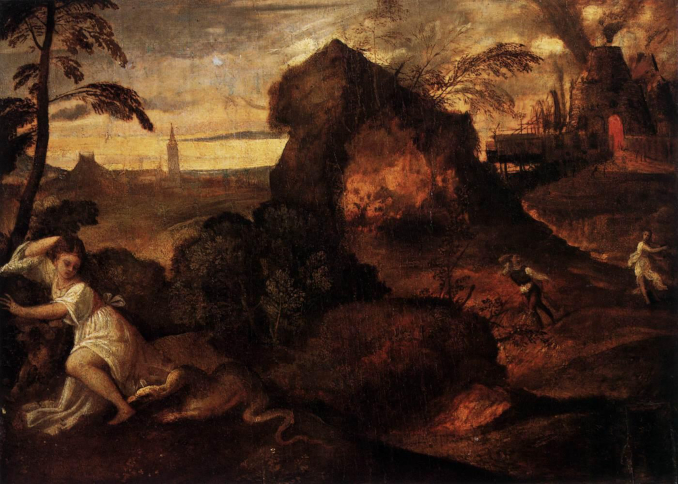
Another painting in the exhibition, called Orpheus and Eurydice, was also originally misattributed, once considered the work of Giorgione but now known as an early painting by Titian. The two artists both studied together with Bellini, and for that reason, the authorship of some of their works has sometimes been confused. It is a very atmospheric painting with a complex landscape in the background. The left part of the painting illustrates Eurydice being bitten by a snake/dragon, and because that action takes place on Earth, the corresponding landscape is light and airy, with the Venetian bell tower in the back. On the right-hand side, Orpheus and Eurydice are being separated in hell, and their surroundings are dark and foreboding. The sky is dark, and the entrance to the infernal sphere is marked by a conical tower that spews smoke and fire.
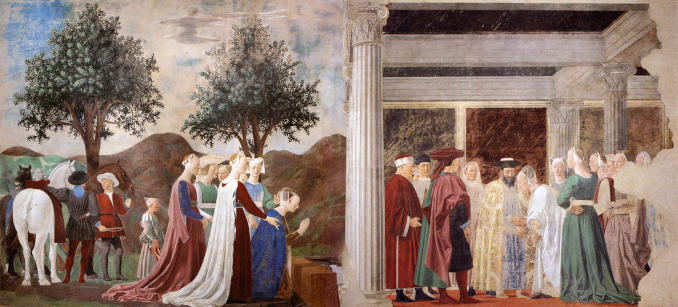
Another way to avoid Florence’s crowds is to visit nearby towns—many of them full of art treasures in a less frantic setting. Arezzo, a town about 50 miles (80 km) from Florence, started out as one of the centers of the Etruscan civilization and in the Renaissance was home to Giorgio Vasari and birthplace of the poets Petrarch and Aretino. These days, it attract tourists for its medieval joust festival and year-round visitors to the frescoes by Piero della Francesca in the St. Francis Basilica. Visiting this chapel requires reservations, but this is a much less besieged art site than Giotto’s frescoes in Padua and equally worth a trip.
Not much is known about Piero della Francesca, not even his birth date (he died in 1492, just as Columbus was discovering America). We do know that he was not only a painter but also a councilman, mathematician, and prominent member of Tuscan society. Arezzo is the location of his crowning achievement: a cycle of paintings, History of the True Cross, which illustrates stories about how the remnants of the Christ’s cross were discovered and collected. These frescoes have a place in history as one of the first masterpieces displaying a humanist approach to the visual arts, and they remain a true delight for us as contemporary viewers.
